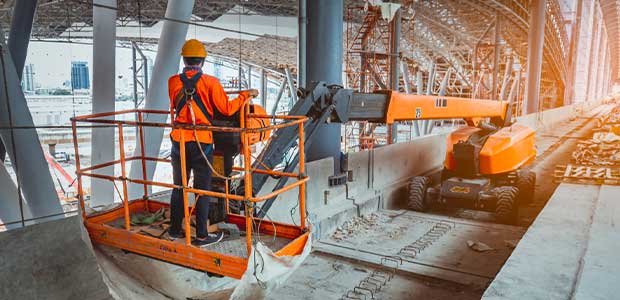
Fall Protection in Vehicle-Mounted Elevating and Rotating Aerial Devices
The time to act on fall protection is not after an incident occurs. It’s now.
- By Andy Netzel
- Dec 01, 2022
What is the first thing that you think about when you see the words “fall protection?” Do you think of a harness? Guard rails? Or perhaps you think of OSHA violations and worker’s compensation cases. Whatever your first thought might be, it is my hope that your immediate next thought is about safety and proper fall protection training.
Falls from heights are a leading cause of workplace injuries and fatalities. Fall protection is routinely in the OSHA Top 10 most frequently cited standards; in 2021, Fall Protection ranked as the #1 most frequently cited standard, and Fall Protection Training ranked #6. Thus far in 2022, Fall Protection again ranks as the #1 most frequently cited standard with Fall Protection Training ranking #4 and Aerial Lifts ranking #9. Fall Protection Systems rank the #10 most cited standard. Why is something so potentially hazardous discounted by aerial lift operators year after year? Let’s dive further into fall protection and how both workers and organizations can protect themselves.
What is Fall Protection?
Fall protection is the use of controls designed to protect personnel from falling, or in the event that they do fall, to prevent severe injury. Fall protection systems, when properly utilized, are designed to prevent injury and death should a fall incident occur. Aerial unit designs are required to provide fall protection with the first line of protection being guard rails. In a vehicle-mounted elevating and rotating aerial unit, the shape and design of the platform satisfies the requirements for guard rails as the first line of fall protection.
In addition to the requirement for aerial units to provide fall protection, there exists a requirement that operators use personal fall protection to protect against ejection from the platform. Here operators have a choice: a fall arrest system or a fall restraint system.
Are fall arrest systems the same as fall restraint systems? Fall arrest systems prevent serious injury should a fall incident occur; however, they do not prevent an operator from falling out of a platform. These systems protect an operator while the fall occurs by limiting the force an operator’s body will experience and preventing the operator from hitting the ground. Fall arrest systems are not synonymous with fall restraint systems which prevent individuals from falling. Fall restraint systems must prevent a fall from occurring, and the operator must not be exposed to a fall. Although it is commonly thought that fall restraint systems have a specific lanyard length to prevent falls, these systems do not have a lanyard length maximum.
This article originally appeared in the December 1, 2022 issue of Occupational Health & Safety.